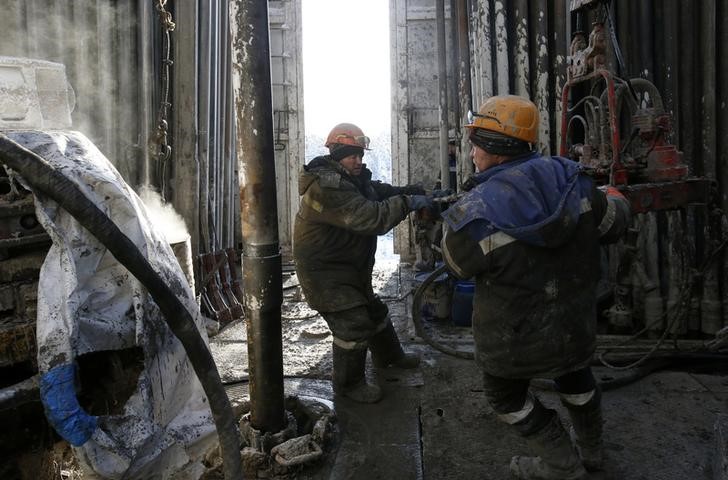Intel stock extends gains after report of possible U.S. government stake
Investing.com – OPEC’s plan for deeper oil cuts barely a month after the tight supply scare from the Saudi attacks sent crude prices higher on Thursday. But analysts also voiced concerns that edgy U.S.-China trade talks could drag the market down again before the week concludes.
U.S. West Texas Intermediate crude was up 67 cents, or 1.3%, at $53.26 per barrel by 12:54 PM ET (16:54 GMT).
U.K. Brent oil rose 48 cents, or 0.8%, to $58.80.
Crude prices perked after OPEC upheld its forecast for global oil demand next year, while indicating it expects supply from non-OPEC sources to grow slightly less than previously thought.
OPEC "will take appropriate, strong, positive decisions that will set us on the path of heightened and sustained stability for 2020," the cartel's Secretary General Mohammad Barkindo told reporters at a briefing in London, Reuters reported.
"All options are open," Barkindo said, when asked about the prospect of a deeper oil supply cut.
OPEC, Russia and other producers, an alliance known as OPEC+, have since January implemented a deal to cut oil output by 1.2 million barrels per day to support the market. The pact runs to March 2020 and the producers meet to set policy on Dec. 5-6.
Should OPEC+ call for deeper cuts, it would be further proof that the only way to fetch higher oil prices these days would be to crimp supply instead of trying to spur demand.
It’s been a remarkable few weeks in oil after the Sept. 14 attack on Saudi energy infrastructure that briefly knocked out 5% of daily global supply and sent Brent beyond $70 per barrel before the market’s quick return to previous pricing on assurances that Riyadh’s production has been fully restored.
Separately, the Wall Street Journal reported that investment bankers could deliver as soon as Friday a valuation much lower than the $2 trillion expected by Saudi Crown Prince Mohammed bin Salman for the initial public offering of the kingdom’s state oil company Aramco.
Crude prices were also supported Thursday by reports that Russia and Saudi Arabia will sign more than $2 billion of deals and discuss the OPEC+ oil output agreement during President Vladimir Putin's first visit to the kingdom in more than a decade next week.
But some analysts pointed to continued rumblings on U.S.-China trade and how that could weigh on the market again before the week ended.
High-level negotiations between the White House and Beijing began with fanfare again on Thursday after being stalled for five months, lending to higher risk appetite on Wall Street and across markets.
But many traders were also pessimistic about real gains from the talks given continuous diplomatic offensives fired by the Trump administration against China in recent days.
“Oil traders are looking at the world through China-colored glasses,” Phil Flynn of Chicago’s Price Futures Group said, commenting that conflicting headlines on U.S.-China talks were causing whipsaw moves, just when the market thought that cross currents in oil couldn’t get any more complicated.
